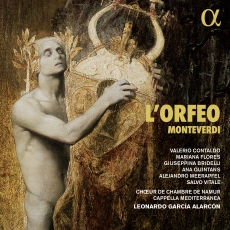Leonardo García Alarcón - Monteverdi: L'Orfeo - Opera News
Leonardo García Alarcón brings a thoughtful and very dramatic approach to Monteverdi’s 1607 L’Orfeo. In spite of the composer’s detailed list of instruments published in the score, a conductor still has many questions to resolve. Alarcón’s approach is to personalize every moment with a variety of colors and textures, carefully contrasting the action on earth—dancing and rejoicing at the marriage of Orfeo and Euridice—with scenes in the underworld, where the hero has gone to beg for his wife’s return after her tragic, premature death. The higher pitch used (A = 466, or a half-step above the notated pitches) reflects current thinking on the practices in the court of Mantua in the early seventeenth century.
But there is much to admire in this recording, and it’s a testament to the power of the work that it stands up to different choices in instrumentation, tempo relationships and casting. Most important is the eloquence and stylish virtuosity of the tenor in the title role, and Valerio Contaldo fits the bill handsomely. Portraying the most famous singer of all time, half man, half god, Contaldo brings immediacy and point—but plenty of warmth—to Orfeo’s many and varied arias, including a hushed prayer to his father, Apollo, a joyful welcome to his friends and to the comforts of the countryside, as well as his stupefied and harshly unmusical reaction to the news of Euridice’s death (“Tu sei morta”). Here, Alarcón and Contaldo highlight the movement from chaos to gradual control, both of the music and of the hero.
